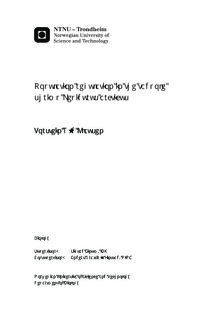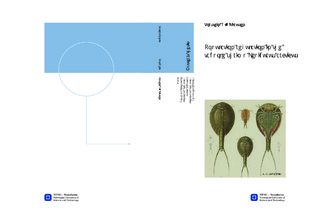| dc.description.abstract | A metapopulation consists of several subpopulations that show limited degree of internal regulation, and are not viable alone in the long term. Instead, each subpopulation is sustained over time by migration and re-colonization from nearby subpopulations. Here, I test for internal regulation in populations of the freshwater crustacean Lepidurus arcticus, commonly found throughout the Arctic, and also alpine areas of mainland Norway. A survey of Arctic populations situated at Bear Island and mainland Norwegian populations situated in the Dovre area revealed a correspondence between distance between habitat patches and frequency of occurrence. The life-history and distribution pattern of L. arcticus, with highly ephemeral populations in fragmented habitats accordingly suggest this as a candidate species for displaying metapopulation structure. First, the occurrence of L. arcticus on Bear Island and Dovre was analyzed. Then, temperature and mass scaling functions where parameterized using a laboratory set-up. A field experiment was conducted to test for density-dependent growth. Finally, growth rate and density was compared among natural populations to test if population density or growth rate was affected by system productivity, or if eventual density effects on growth was modified by productivity. L. arcticus was more widespread at Bear Island than on Dovre. Somatic growth increased with temperature, and L. arcticus showed density-dependent growth in the field experiment. Neither population density nor system productivity was found to affect growth in the natural populations, but system productivity was positively correlated with population density. Density-dependent growth under experimental conditions, together with the correlation between system productivity and population density show support for internal regulation. The results suggest that the difference between Bear Island and mainland Norway are likely due to environmental factors, not a metapopulation structure. | nb_NO |

